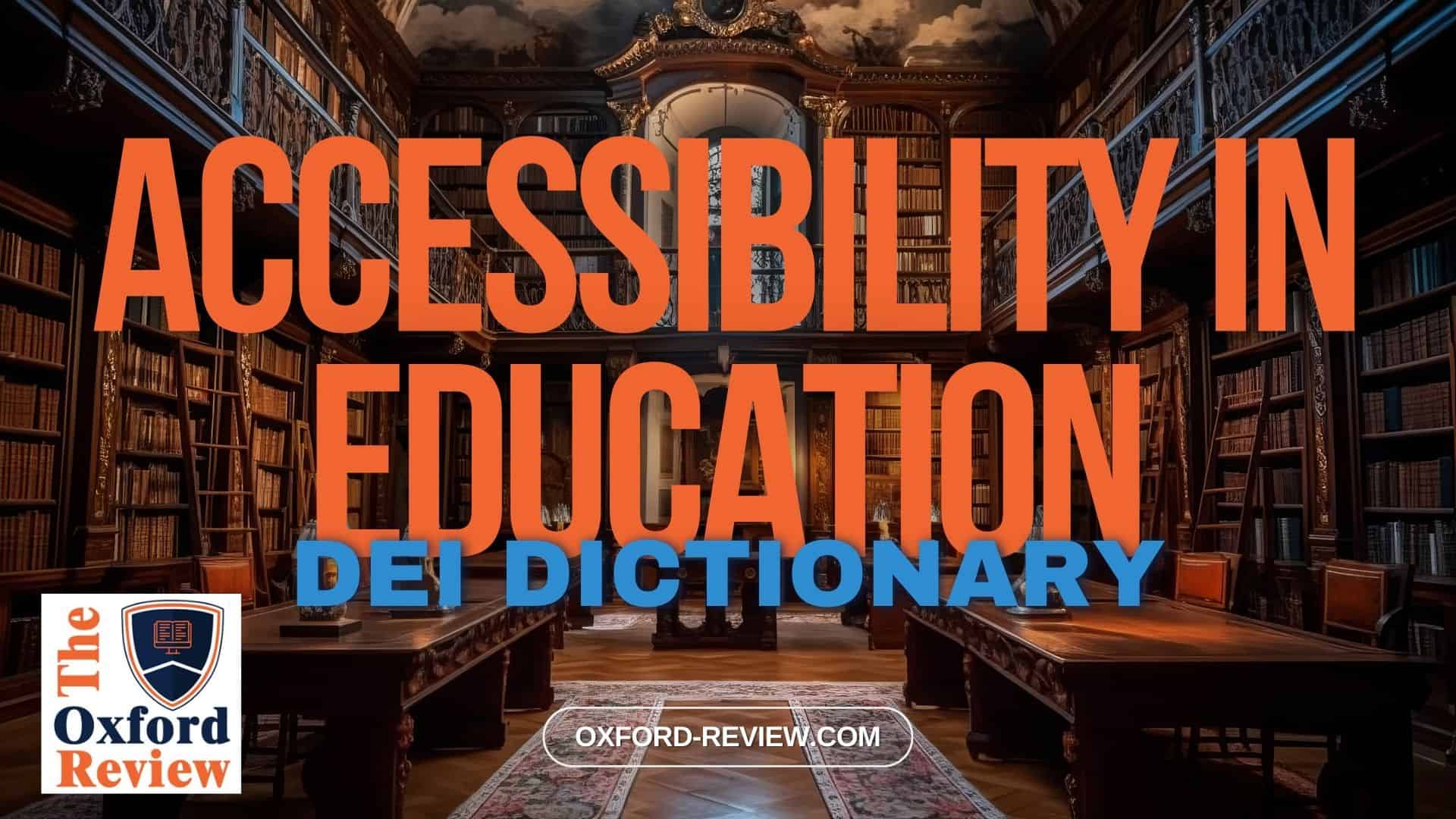Accessibility in Education – Definition and Explanation

Enhancing Learning Opportunities: Understanding Accessibility in Education
Accessibility in education refers to the practice of ensuring that all students, irrespective of their abilities or backgrounds, have equal access to educational resources, programs, and opportunities. In today’s diverse learning environments, prioritising accessibility is crucial for promoting inclusivity and providing every student with the chance to thrive academically.
Definition:
Accessibility in education encompasses various aspects, including physical accessibility, digital accessibility, and curriculum accessibility. Physical accessibility involves ensuring that educational facilities, classrooms, and resources are designed to accommodate students with physical disabilities, such as wheelchair ramps, accessible restrooms, and adjustable desks. Digital accessibility focuses on making educational materials and online platforms accessible to students with visual or auditory impairments through features like screen readers, captions, and alternative text. Curriculum accessibility involves designing instructional materials and assessments that cater to diverse learning styles and needs, such as providing multiple formats for textbooks, offering alternative assessment methods, and incorporating inclusive teaching practices.
Why is Accessibility Important in Education?
Accessibility in education is vital for promoting diversity, equity, and inclusion within learning environments. By removing barriers to learning, accessibility ensures that every student has the opportunity to fully participate in educational activities and reach their potential. It fosters a culture of respect and acceptance by valuing the unique abilities and perspectives of all students, regardless of their differences. Moreover, accessibility benefits not only students with disabilities but also enhances the overall learning experience for everyone, leading to improved academic outcomes and a more supportive and inclusive school community.
Example:
Consider a secondary school that adopts inclusive practices to support students with dyslexia, a learning disability that affects reading and language processing skills. To enhance accessibility, the school provides digital textbooks with built-in text-to-speech features, allowing students with dyslexia to listen to the text instead of relying solely on reading. Additionally, teachers offer alternative assessment methods, such as oral presentations or multimedia projects, to accommodate diverse learning styles and strengths. By implementing these accessibility measures, the school creates a more inclusive learning environment where students with dyslexia can fully engage in their education and succeed alongside their peers.
Conclusion:
Accessibility in education is not merely a legal obligation but a fundamental principle that promotes equity, diversity, and inclusion in learning environments. By prioritising accessibility, educational institutions can ensure that every student, regardless of their abilities or backgrounds, has equal access to educational resources, programs, and opportunities. From physical accommodations to digital enhancements and inclusive teaching practices, accessibility in education paves the way for a more equitable and enriching learning experience for all.
References:
Bright, D. (2022). An integrative review of the potential of wireless assistive technologies and internet of things (IoT) to improve accessibility to education for students with disabilities. Assistive Technology, 34(6), 653-660. https://www.tandfonline.com/doi/abs/10.1080/10400435.2021.1956639
Be impressively well informed

Get the very latest research intelligence briefings, video research briefings, infographics and more sent direct to you as they are published
Be the most impressively well-informed and up-to-date person around...
